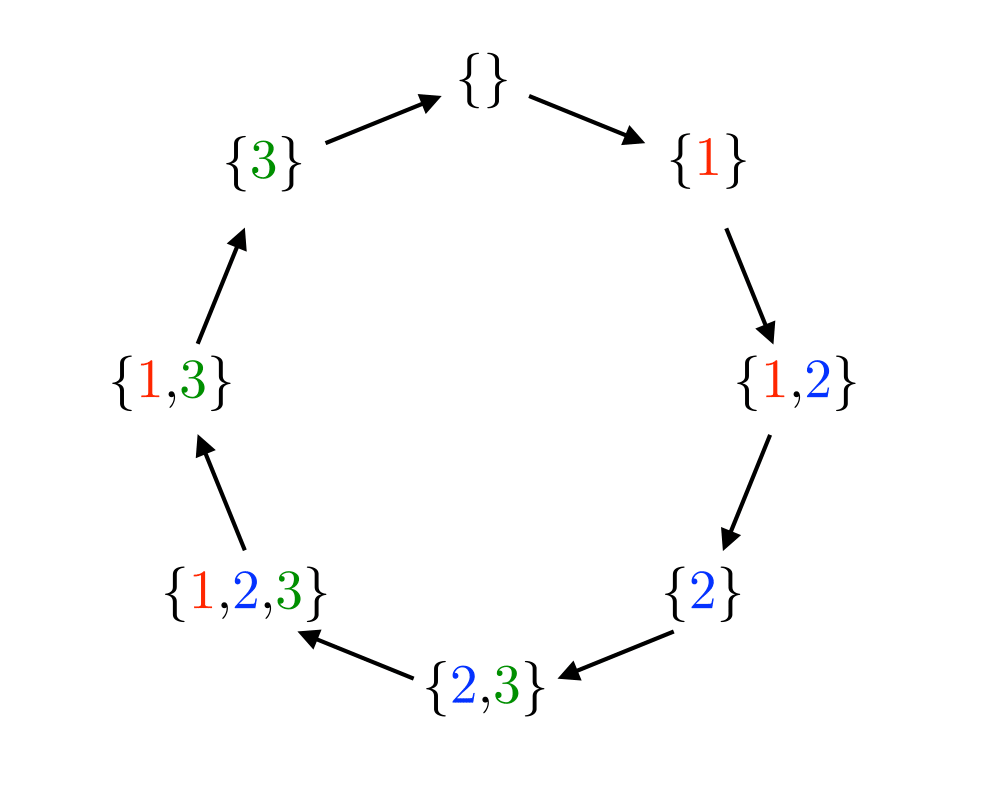 |
 |
 |
 |
Input Description: An integer \(n\).
Problem: Generate (1) all, or (2) a random, or (3) the next subset of the integers \(1\) to \(n\).
Excerpt from The Algorithm Design Manual: A subset describes a selection of objects, where the order among them does not matter. Many of the algorithmic problems in this catalog seek the best subset of a group of things: vertex cover seeks the smallest subset of vertices to touch each edge in a graph; knapsack seeks the most profitable subset of items of bounded total size; and set packing seeks the smallest subset of subsets that together cover each item exactly once.
There are \(2n\) distinct subsets of an \(n\)-element set, including the empty set as well as the set itself. This grows exponentially, but at a considerably smaller rate than the \(n!\) permutations of \(n\) items. Indeed, since \(220 =\) 1,048,576, a brute-force search through all subsets of 20 elements is easily manageable, although by \(n=30\), \(230 =\) 1,073,741,824, so you will certainly be pushing things.